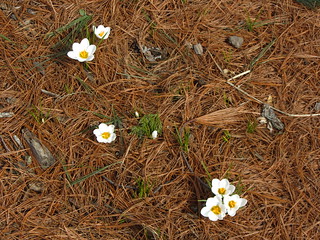
I'm a writer, publishing both as SJ Rozan and, with Carlos Dews, as Sam Cabot. (I'm Sam, he's Cabot.) Here you can find links to my almost-daily blog posts, including the Saturday haiku I've been doing for years. BUT the blog itself has moved to my website. If you go on over there you can subscribe and you'll never miss a post. (Miss a post! A scary thought!) Also, I'll be teaching a writing workshop in Italy this summer -- come join us!
Read/Post Comments (1)

Further to injured birds
A couple of people have asked what to do if you find an injured bird. Here's the protocol:
First, make sure it's really injured. Birds can fly into glass or be knocked off perches by a strong wind (yes, it happens) and be dazed but fine. In spring baby birds fledge in a burst of energy and then spend the next few minutes sitting on the ground wondering what just happened. The mother or father will come along and show the baby how to peck and how to get into a tree, but they won't if you're standing there. So watch the bird; unless it's limping and/or trying to fly and unable to, back away and leave it for awhile. Exception: if you see a songbird struggling in water -- maybe washed off a piling it was snacking on by an unexpected wave -- don't wait and see if it can get out. It can't. Spring into action!
If the bird's really injured, pick it up gently and put it in a cardboard box. Call your local Audubon chapter. There are people all over the country who care for injured birds. You might want to put the number in your phone now, for later. I know, this verges on geekhood, but it won't take up any room in your phone. If it turns out there's no one near you who does this kind of thing, take the bird to a zoo, or a vet.
Longer term: birds can't see glass. 100 million birds world-wide are killed colliding with windows every year. They think they're flying into the sky or trees reflected there. There are things you can do now to make your own windows more bird-safe. The best long-term solution is to demand that all new buildings and retrofits use bird-safe glass. That's glass that has a grid in it visible to birds but not people. It's expensive. But worth every bird of it.
First, make sure it's really injured. Birds can fly into glass or be knocked off perches by a strong wind (yes, it happens) and be dazed but fine. In spring baby birds fledge in a burst of energy and then spend the next few minutes sitting on the ground wondering what just happened. The mother or father will come along and show the baby how to peck and how to get into a tree, but they won't if you're standing there. So watch the bird; unless it's limping and/or trying to fly and unable to, back away and leave it for awhile. Exception: if you see a songbird struggling in water -- maybe washed off a piling it was snacking on by an unexpected wave -- don't wait and see if it can get out. It can't. Spring into action!
If the bird's really injured, pick it up gently and put it in a cardboard box. Call your local Audubon chapter. There are people all over the country who care for injured birds. You might want to put the number in your phone now, for later. I know, this verges on geekhood, but it won't take up any room in your phone. If it turns out there's no one near you who does this kind of thing, take the bird to a zoo, or a vet.
Longer term: birds can't see glass. 100 million birds world-wide are killed colliding with windows every year. They think they're flying into the sky or trees reflected there. There are things you can do now to make your own windows more bird-safe. The best long-term solution is to demand that all new buildings and retrofits use bird-safe glass. That's glass that has a grid in it visible to birds but not people. It's expensive. But worth every bird of it.
Read/Post Comments (1)
Previous Entry :: Next Entry
Back to Top